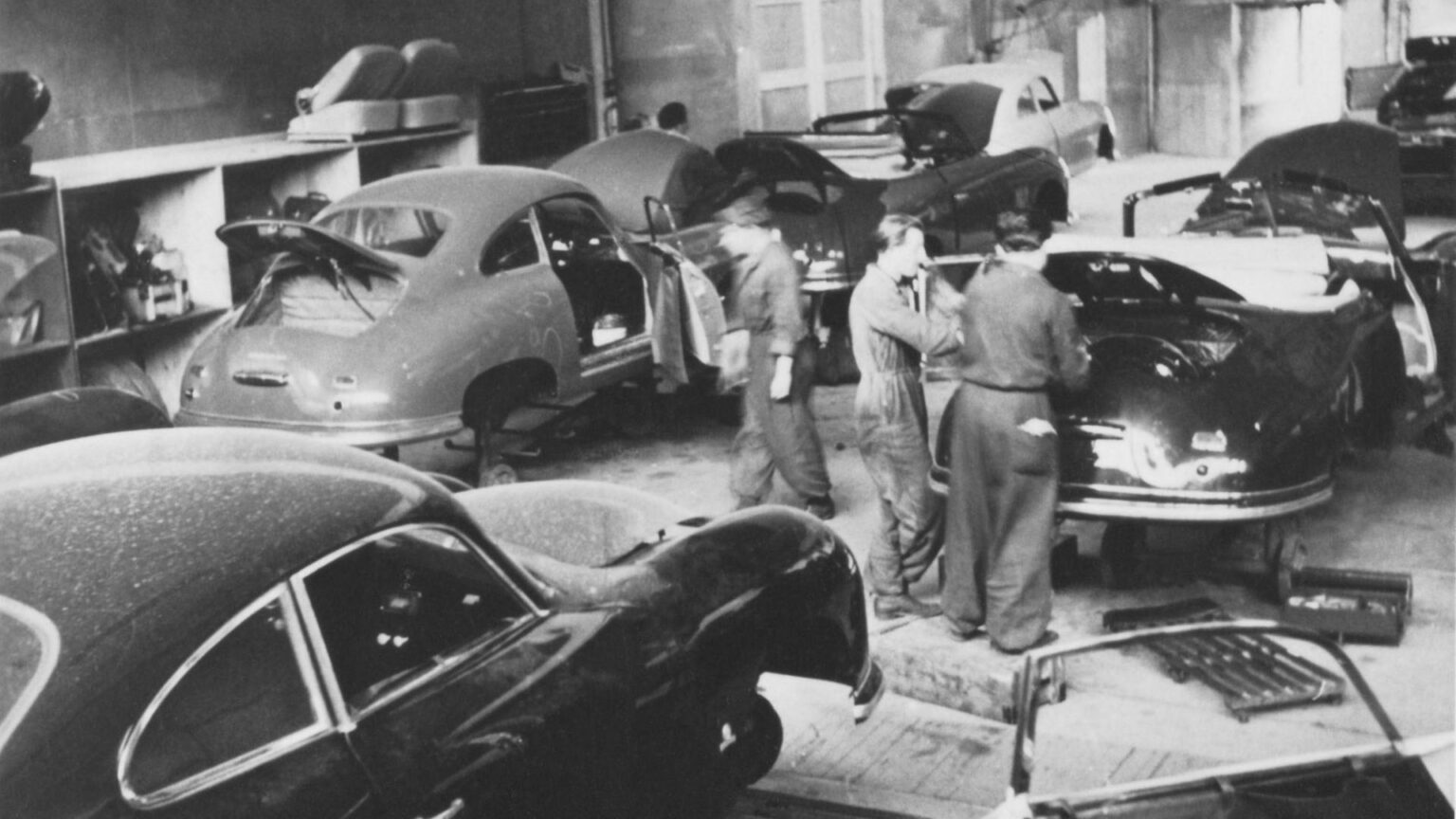Porsche will celebrate a significant milestone on April 6, 2025, right in its hometown, no less. What’s the occasion? Well, the legendary manufacturer of sports cars and related vehicles of impeccable pedigree has been building vehicles at its factory in Zuffenhausen, a district of Stuttgart, Germany in the country’s southwest, for three quarters of a century. Yep, that’s a full 75 years of manufacturing excellence.
Hallowed Automotive Ground
Igniting the passions of driving enthusiasts around the world, the first Porsche 356 sports car rolled off the Zuffenhausen assembly line on April 6, 1950. Since that auspicious day, the automaker has built numerous products at this hallowed facility, from the iconic 911, which has been in production there since 1964, to the 718 Cayman and Boxster models to the all-electric Taycan.
- Vehicle production in Zuffenhausen started in 1950
- The 356, 911, 718 Cayman and Boxster, and the all-electric Taycan have all been assembled in Zuffenhausen
- Just 317 356 sports cars were built in Zuffenhausen in 1950
“The development of the location shows how Porsche has transformed itself from a small sports car maker into a world-leading company that produces exclusive vehicles,” said Albrecht Reimold, member of the executive board for production and logistics at Porsche in a media release shared by the company. “Zuffenhausen is and remains the home of our sports cars,” he added. “It embodies pioneering spirit, state-of-the-art production technology and manufacturing quality,”
From Humble Beginnings To Industrial Powerhouse
Porsche’s beginnings in Zuffenhausen were decidedly humble. The facility started as a construction office back in 1938, and series production of the first 52 copies of the 356 were completed in Austria of all places. These cars had handmade aluminum bodies and were built between 1948 and 1950.
Of course, following the devastation of the Second World War, Porsche’s operations in Germany were occupied by Allied forces. But after some finagling and lots of hard work, the company was able to get production up and running again.
By the end of 1950, Porsche had built just 317 copies of the 356, woefully inadequate production, because once word got out about this car, and as news spread about the company’s motorsports success, demand for the 356 exploded in export markets.
Thanks to the U.S. military administration delaying the handover of the Werk 1 assembly hall, Porsche had to build another nearby. The Werk 2 facility opened in 1952, though, thanks to strong demand, expansions were underway just two years later. The automaker would eventually get control of Werk 1 in late 1955.
What’s interesting is that Porsche implemented advanced flexible manufacturing techniques decades before some other automakers. In the early 1950s, the company was building a range of different vehicles on the same production line. As the company notes, “The coupe, cabriolet, roadster and speedster variants of the Porsche 356 were all manufactured in parallel and individually finished. This principle of having a range of variants combined with high efficiency and quality has remained a hallmark of production at the headquarters.” This flexible manufacturing approach is something Porsche continues to take advantage of today.
Eventually, production of the legendary 911 supplanted the 356, with the automaker’s production facilities expanding to meet demand. By 1988, a fifth assembly hall, Werk 5, was built, and then, breaking with tradition, the all-electric Taycan entered production in 2019, something that required significant amounts of retooling at several facilities to accommodate.
There have certainly been some bumps in the road between 1950 and 2025, but Porsche must be proud of the work it’s done. “Zuffenhausen is and remains the home of our sports cars,” said Reimold. “This is where we produce cars that fascinate the world – with a production that has been combining craftsmanship and engineering skills for 75 years.” Hopefully, this tradition of excellence continues for the next three-quarters of a century.
Read the full article here


